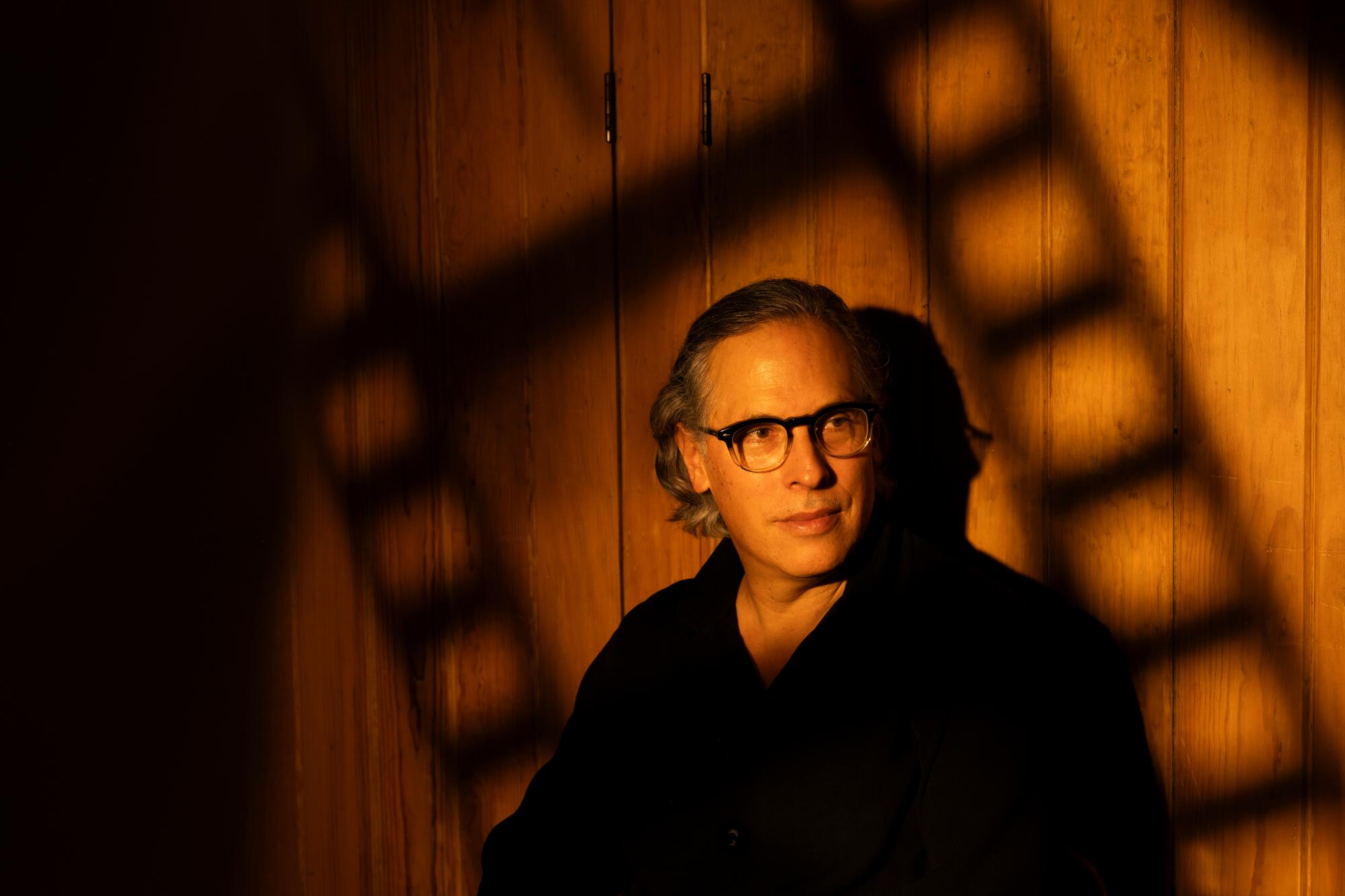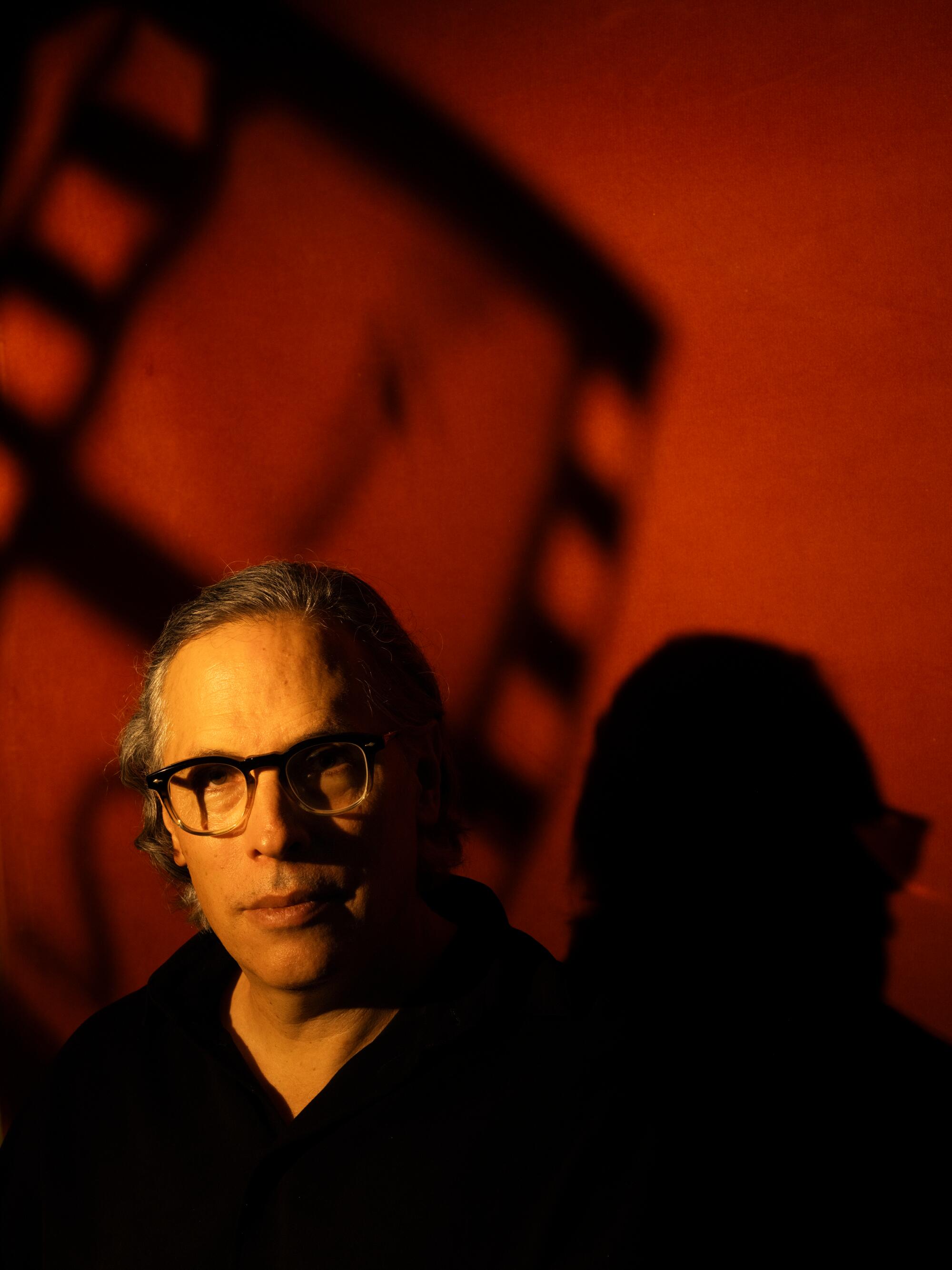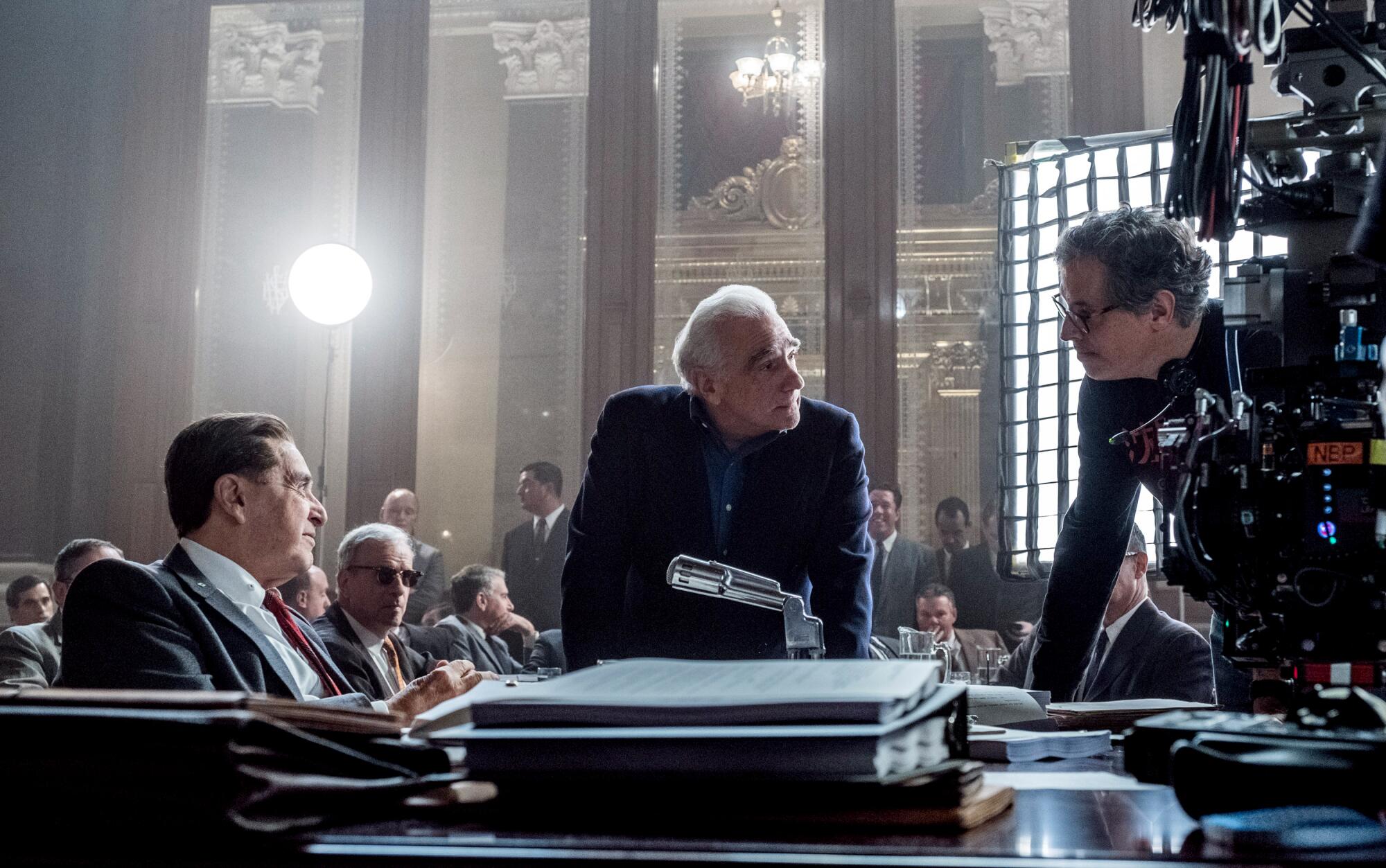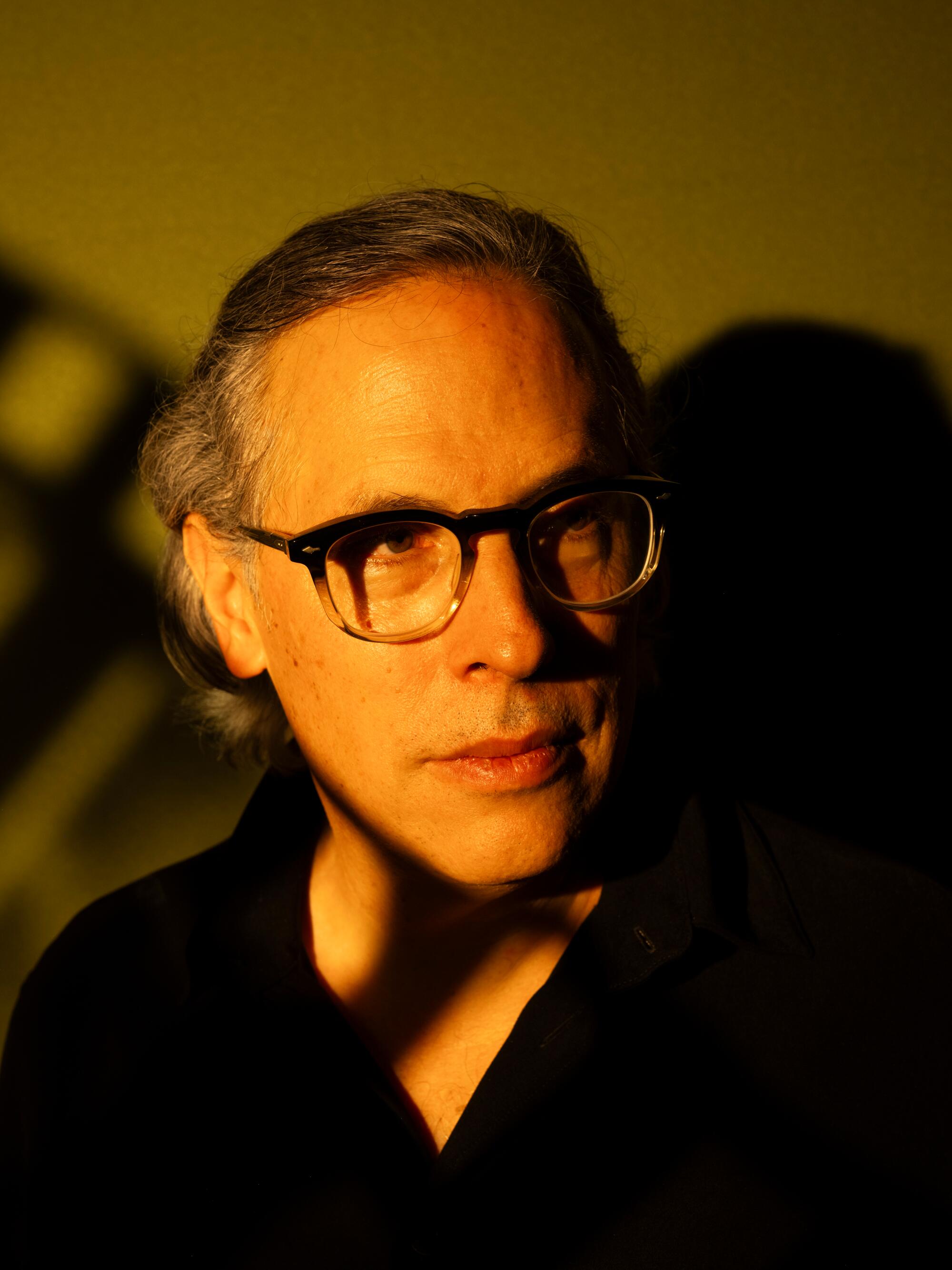
- Share via
What’s the cinematic DNA that links Greta Gerwig’s billion-dollar-grossing “Barbie” with Martin Scorsese’s brooding historical epic “Killers of the Flower Moon,” due in theaters next Friday?
“I try to always approach cinematography from an emotional standpoint,” says the man who shot both movies, Rodrigo Prieto. “The lighting, the decisions on color, lenses, camera movement, texture — all that is based on memories and how I remember feelings with images in my life.”
Originally from Mexico City, the three-time Oscar nominee sometimes likens his craft to a magician’s tricks. But it’s Prieto’s heart-first solutions to the technical demands of each story that have earned him the trust of several of the world’s most revered and idiosyncratic directors.
“His work was sharp, dynamic and alive,” says Scorsese via email about choosing Prieto to shoot 2013’s “The Wolf of Wall Street,” the first of their five joint ventures. “A beautiful eye,” he adds. Scorsese was struck by Prieto’s photography for such varied filmmakers as Spike Lee (the vivid post-9/11 New York City of “25th Hour”), Ang Lee (“Brokeback Mountain’s” longing vastness) and Alejandro González Iñárritu (2000’s “Amores Perros,” his handheld breakout).

“He is a force for good on a movie set, a true leader,” Gerwig tells The Times. “He was neither imposing his will nor executing mine, but in that in-between space where I like to be most. It felt like writing with Noah [Baumbach, Gerwig’s co-screenwriter and partner], in a way — a true collaboration.”
Entering Prieto’s two-story home in Pacific Palisades, one steps into a space of welcoming elegance: airy rooms accentuated by curated decorations that speak to his varied interests.
Near the staircase hangs a kinetic, eye-catching painting by Emiliano Gironella Parra, inspired by “Pedro Páramo,” Juan Rulfo’s seminal 1955 novel that Prieto has just turned into his feature directorial debut. (He bought the artwork in Mexico while making “Frida” in 2001.) And in one of the rooms upstairs, a wall bears a treasured poster of Prieto’s all-time favorite film, “Raging Bull,” which Scorsese, Robert De Niro and Joe Pesci all signed at his wife’s request during the shooting of “The Irishman.”
Prieto, 57, says his film fandom started with monsters. As a child, he and his older brother, Antonio, would turn their parents’ home into a makeshift haunted house, where they’d use stop-motion animation and rear projection to make scary figurines move. “I got hooked on thrilling our friends and seeing the impact of what we could do with our creativity.” Prieto recalls.
Growing up in Mexico, Prieto had no idea this could become a viable profession. Fortunately, that changed in high school when a teacher pointed him to a small academy exclusively dedicated to training people in Super-8. He enrolled, and when that institution closed after the film stock was discontinued, his passion continued, learning from famed shooter Nadine Markova, who taught him the basics of composition. “My father was an engineer and my mother was an amateur painter,” Prieto says. “I guess photography is a combination of those two.”
Against the advice of those around him who thought he’d be better off working, Prieto studied at Centro de Capacitación Cinematográfica, one of Mexico’s most renowned film schools, still not knowing if he wanted to do cinematography or direct. Those budding directors — “very cultured, serious people who had seen all the movies,” Prieto says — were not exactly who he was.
“I felt I didn’t fit into that mold,” he recalls. “I wasn’t a cinephile, but just a fan of monsters who liked playing with film.”

Still, it launched his career, introducing him to many of the Mexican filmmakers he’d go on to collaborate with over the years, including Carlos Carrera and Eva López Sánchez. After graduating, Prieto got a gig on the 1996 horror title “Sobrenatural,” which landed him a U.S. agent.
“You leave a part of your soul in every movie,” he says. “It’s so intense and time-consuming — time away from your family — so it better be worth it.” (Prieto has two daughters.)
Early in his career, Prieto made the mistake of bringing copious notes to a meeting with one director, because he had already imagined how he would shoot the film. It terrified his counterpart. Prieto didn’t get that job.
“I learned that what’s very important, especially the first time working with a director, is to shut up, listen and only make suggestions after a director has explained what’s in their mind and in their hearts,” says Prieto.
That modesty has led him to be versatile, meaning he has never been married to one stylistic signature or tool.“I have no loyalty to any brand of cameras or lenses,” Prieto says of a run of work that’s spanned scrappy rawness (“8 Mile”) to luxe sci-fi romance (“Passengers”). “On each project there’s a new thing that I’m trying. It’s a little bit like cooking. You have some ingredients and put them together to try to find a taste. I try to create a new taste for each movie.”
And, as with cooking, the results often transcend words. “With all the people I’ve worked with, we develop a relationship beyond friendship or a director giving me instructions,” he says. “I have to understand their psyche. The only way to do that is to fall in love with them.”
With Scorsese, it was easy. They’ve now done four feature films and one television series together, including HBO’s record-industry-set “Vinyl” and Scorsese’s longtime obsession, the religious drama “Silence.” Project after project, the crux of their work together happens during an epic preliminary conversation: Over the course of two or three days, Prieto and the assistant director listen to Scorsese explain each part of the screenplay, shot by shot.

“When he describes it, that’s my favorite part of working with Scorsese,” the cinematographer says. Scorsese doesn’t use technical terms, but dives into the emotional intention of each moment. “If I present a shot, he’ll typically say, ‘Rodrigo, I think it should be more extreme,’” Prieto says. “Then I have to figure out what that means, translate it into a different lens, a different camera position, something with lighting, maybe.”
“That’s the heart of the process,” Scorsese explains.“At the core of it, we’re dealing with emotion. In any given scene, we have to underscore the immediate emotions.”
For “Killers of the Flower Moon,” about the notorious murders committed in Oklahoma’s Osage territory during the 1920s and ’30s, fire would serve as a recurring motif. (Sometimes valuable oil land would be set ablaze in order to collect on claims.) Prieto used gas pipes buried underground, which created shimmering air at different distances from the camera to give the image an unusual distortion. Combined with multiple controlled fires, the effect proved eerie — and one that Prieto hadn’t anticipated.
“It’s the kind of thing that I really enjoy, where you set things up with an expected result and something else happens that’s surprising,” Prieto says.
I asked Scorsese to pick one remarkable shot from his long experience with Prieto. He chose several, a noncomprehensive list of Prieto’s greatest hits: the explosive office scenes from “Wolf of Wall Street,” samurais in the mist in “Silence,” a pool-hall arrest in “Killers.” Scorsese describes these moments impressionistically, cutting to the heart of what he does with Prieto: “Camera, actors and light, choreographed in a vertiginous-like entrapment.”
As soon as he wrapped on location with Scorsese in 2021, Prieto left Oklahoma for Barbieland in London, and a collaboration with Gerwig that was characterized by more room for design, interaction and expression.
“I always feel that his cinema language is made anew for each movie,” says Gerwig. “And his color — it’s just so rich and emotional and deep. It is never obvious, but it is always meaningful.” (Prieto brought a touch of his cultural background to “Barbie” with his inclusion of rosa mexicano, a specific shade of pink that comes from the bougainvillea flower.)
Gerwig calls their shared aesthetic “artificial authenticity,” anchored in a love of 1950s soundstage musicals, Jacques Tati’s liquid color and melancholy comedies like “Heaven Can Wait.” It was a term she used to express her intent for every aspect of the “Barbie” production.
“We always asked ourselves, ‘How would this have been accomplished in 1950?’” Gerwig says. They decided on painted backgrounds and miniatures to create the illusion of space and size.

Prieto’s rule was that everything in Barbieland should be flatteringly backlit: Everything’s perfect in Barbieland, so there was no room for hard shadows.
“My key word for ‘Barbie’ was innocence,” Prieto recalls. “For these toys, the world is all good. I wanted the camera to behave in a very innocent way in Barbieland. It’s usually frontal or sideways. We didn’t use any oblique angles. And that was based on the idea of opening a box.”
It’s hard to imagine two more disparate visions in American movies this year, the burnished amber burn of “Killers of the Flower Moon” and the pop precision of “Barbie.” Prieto could very likely be competing with himself come awards season. To kick things off, in early November he will receive the 2023 Arbol de la Vida Lifetime Achievement Award from the GuadaLAjara Film Festival here in L.A.
During the last few years, he’s also expanded his resume by shooting three music videos for Taylor Swift, first for “The Man,” a 2019 track that deals with sexism. Prieto later worked on the ethereal, enchanted-forest-set videos for “Cardigan” and “Willow,” from Swift’s pandemic albums “Folklore” and “Evermore,” respectively.
“When we started talking about the shots, she would talk about the lyrics and she’d sometimes sing them,” says Prieto, describing a personal language with Swift that, again, per his mantra, involves a lot of listening. “She’s a storyteller, of course, in her music, but all the sets and the ideas are completely hers. She comes up with the whole thing.” He suspects a Swift-directed feature is almost certain.

Prieto has recently made that leap himself with his upcoming adaptation of “Pedro Páramo” for Netflix. The novel follows a man in search of his father, an existential quest populated by ghostly entities that calls back to his childhood haunted houses. “It really is embedded in me, this feeling of the supernatural in Mexico,” he says.
The opportunity to direct came at the right time, he thinks, both in terms of his maturity and his confidence as a shooter.
“Perhaps I wouldn’t have done this movie if my career as a director depended on it, because it could completely fail,” he says. “I thought, OK, I’ll put everything of myself in there. I’ll give it my best shot and if it doesn’t work, I still love shooting and I’m still planning to continue shooting. There was a fallback plan.”
Whatever may come of it, his favorite directors will have to wait a bit for his return, while he dreams this new dream for a while. “Nothing stops him,” Scorsese says. “Not the extreme heat in Oklahoma when we were shooting ‘Killers,’ not the typhoons in Taiwan on ‘Silence.’ Nothing.”
With an endorsement as heroic as that, Prieto can’t lose.
More to Read
Only good movies
Get the Indie Focus newsletter, Mark Olsen's weekly guide to the world of cinema.
You may occasionally receive promotional content from the Los Angeles Times.









